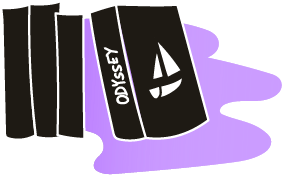Title of the resource
Title of the resource in english
Publisher
Cambridge University Press
Original language
Target and Age Group
Elementary level, 6 - 10 years old
Author of the Entry:
Marta Pszczolińska, University of Warsaw, m.pszczolinska@al.uw.edu.pl
Peer-reviewer of the Entry:
Elżbieta Olechowska, University of Warsaw, elzbieta.olechowska@gmail.com
Second Peer-reviewer of the Entry:
Ayelet Peer, Bar- Ilan University, ayelet.peer@biu.ac.il
Barbara Bell
Barbara Bell is the head of classics at Clifton High, a girls' independent school in Bristol and teaches at Haberdashers’ Girls School in Monmouth. She was the secretary for the Joint Association for Classical Teachers.
Barbara Bell and Yarmouth Pupils
Questionnaire
Helen Forte (illustrator)
Helen Forte is the illustrator of Minimus and Minimus Secundus and creator of the website. She teaches Latin, Art and ICT at Moreton Hall Prep School in rural Suffolk. Her pupils have been using Minimus since she was trying it out for the first time, and they are her guinea pigs for new ideas. She has used puppets, animation, video and interactive exercises, as well as creative writing and experimental archaeology. She also illustrated The Roman Mystery Scrolls, a new series by author Caroline Lawrence.
Contents & Purpose
Minimus is a lively elementary Latin course for children aged 7-10. It combines a basic introduction to the Latin language with background cultural information on the Roman civilization in Britain. Pupils learn Latin through engaging in games and fun activities, using the modern interactive method including audiovisual elements. The child acquires a different linguistic system without going into great grammatical details or studying the rules of phrase formation. This allows the early basic use of the conjunctives and declension without their deeper understanding. The vocabulary is explained through entire phrases, excerpts or terms (e.g., iii idus septembres = [September] eleventh (see below) - without explaining the rules of the Roman calendar).
The book consists of 12 chapters organized by theme. Each of them is abundantly illustrated (the drawings are ink, watercolour, and crayon, stylised to resemble children’s crayon strokes - see below) and contains a mixture of comic stories and myths, simple grammar explanations and exercises. There are few exercises and they are matched to the age group - they include direct speech exercises (e.g., lesson 1 - introduce yourself with a Latinized name; lesson 2 - describe yourself, lesson 7 - the game Simo dicit [Simon says]). As far as grammar is concerned, it is very simple. It explains basic terms: parts of speech and sentences, grammatical gender, commands, prefixes and suffixes and so on. This content helps to develop language awareness, and provides a solid foundation from which learners can progress to further English or foreign language studies.
The basic idea is to introduce a Roman family living in the first-century Roman Britain, in a community at Vindolanda with their cat Vibrissa [Whiskers] and a resident mouse, Minimus (the mouse that made Latin cool). Vindolanda was a Roman garrison situated near Hadrian's Wall. The adventures of the children and the family cat and mouse are dynamic and interesting throughout the textbook. They are present on cartoons or refer to mythical stories.
The textbook contains additional boxes with cultural material featuring Greek myths as stories told by children or other characters. Among them, you can find the myth of Perseus and Medusa (Claudia entertains her guests at her Birthday party), Daedalus and Icarus, Pandora’s box, Echo and Narcissus, Actaeon and Diana (see below), Trojan Horse, Odysseus and the Cyclops, Procrustes and his terrible bed, Midas and the Golden Touch, Pyramus and Thisbe, Mercury’s first trick/robbery.
In addition, the cultural material contains ‘Roman report’ boxes about everyday Roman provincial life, which allows children to learn about the history and culture of their country at the same time (about Roman food, who were the slaves, how did the children write at school, how the Britons were described, what did the Romans think of them and their country, about travelling (to Eboracum [York]), the army, public baths (see below) or funeral customs).
The materials are accompanied by excellent contextual illustrations depicting artifacts, everyday objects found in Vindolanda, details of garrison life: pottery, writing tablets and dip pens, a board game, notes, medical tools, a letter from home to a soldier, a dressing table, a tombstone.
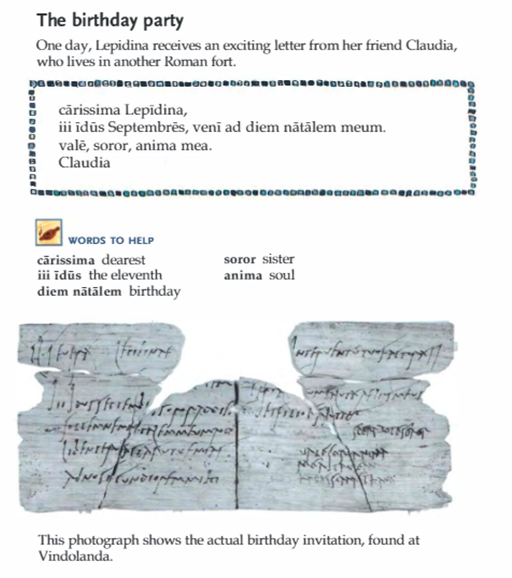
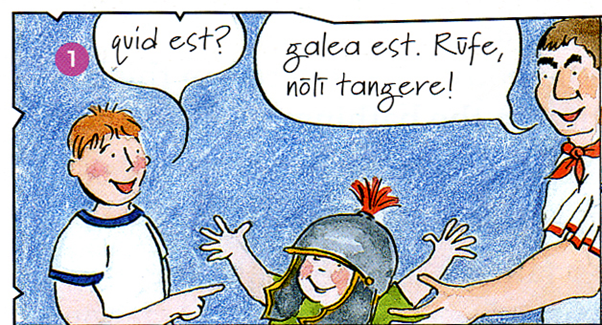
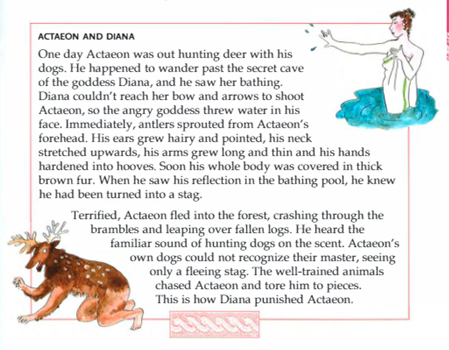
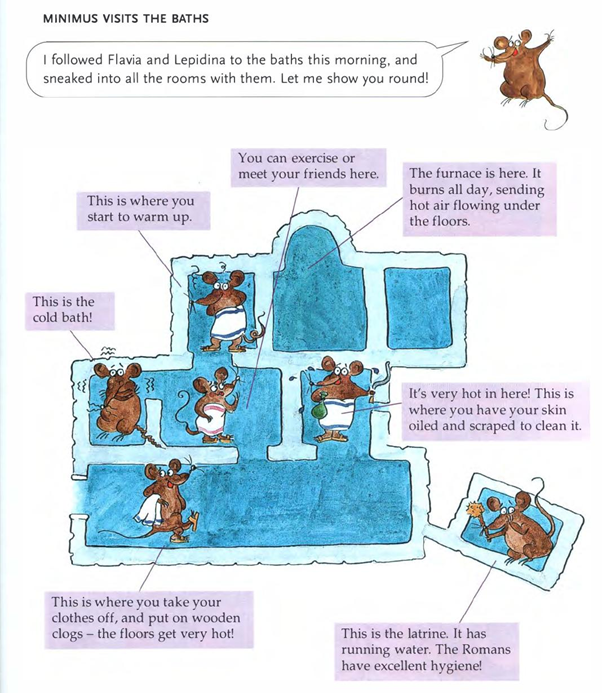
Photos courtesy of Helen Forte
Further comments
Also available: Minimus. Starting out in Latin. The Teacher's Resource Book including teaching guidelines, English translations of the Latin passages, and additional background information, plus photocopiable worksheets;
Also available: Minimus Audio CD;
Second part of Minimus (10-13 years old): Barbara Bell, Minimus Secundus. Moving on in Latin, Cambridge University Press, 2004;
Italian edition : Minimus. Avviamento al latino, Loescher Editore, 2007
The book is aimed at an older reader (secondary school) as there is the only volume of 20 chapters. The setting of the stories alternates between several European locations (first part is set in Rome) and there is considerably more formal grammar and exercises, in line with Italian teaching methods. It is the first Latin textbook published in full colour in Italy.
source: minimus-etc.co.uk (accessed: November 15, 2019);
Slovenian edition: Minimus - latinščina prvi koraki. (Učbenik za latinščino v 7., 8. in 9. razredu), Modrijan 2012;
Portuguese edition - in preparation;
The première of Minimus the Musical took place at Clifton High School on 1st July 2010;
The Minimus website: minimus-etc.co.uk (accessed: November 15, 2019);
Minimus myths storytelling - stories from Minimus (audio files): minimus-myths-vol-1 (accessed: November 15, 2019);
Latin Worksheets inspired by and based on Starting Out in Latin TextBook: here
Addenda
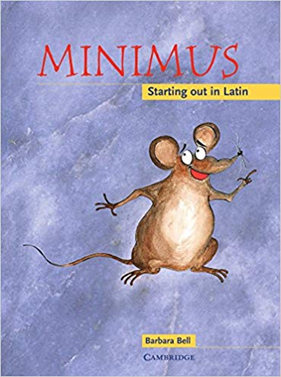
Cover courtesy of Helen Forte
